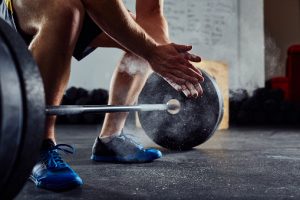
Olympic weightlifting is excellent exercise to build muscle, develop strength and improve athletic performance. However, you won’t see any of those gains if you’re doing it wrong. These are five weightlifting no-no’s that ICWA coaches will help you avoid for better results:
To lift any weight safely, your joints need to be stacked where they’re stable and protected. Lifting without any knowledge of proper form or ignoring proper form will fast-track you to injury. Unfortunately, weightlifting injuries can do more than disrupt your workout momentum. They can cause severe and/or long-lasting pain and/or compromise mobility.
If you want to build muscle, you need to challenge your muscles to the point of breakage because breakage + repair = bigger, thicker muscle fibers. Lighter weights with more repetitions won’t do it. And, every time you increase weight, you will reduce repetitions until you’ve built up enough strength to increase reps and increase weight again.
Weightlifting exercises that isolate muscle groups are not as effective as exercises that challenge multiple muscle groups simultaneously. Fortunately, Olympic style lifts, like the clean and jerk, are dynamic lifts. (ICWA coaches can also show you a number of other lifting exercises that work multiple muscle groups beyond competition lifts.)
To build muscle, you must give your body time to repair muscle. For those in Olympic competition shape, that may be 48 to 72 hours. For the rest of us, it’s closer to 96 hours (four days). So, doing a lifting workout more than once every five days puts you at risk for injury, fatigue and performance plateaus.
When we say “tired” we mean sleepy and energy depleted. Energy depletion may be the result of:
To fully recovery between workouts, you need to eat balanced meals and snacks (and may add supplements—ask coaches for recommendations) and sleep seven to eight hours each night.